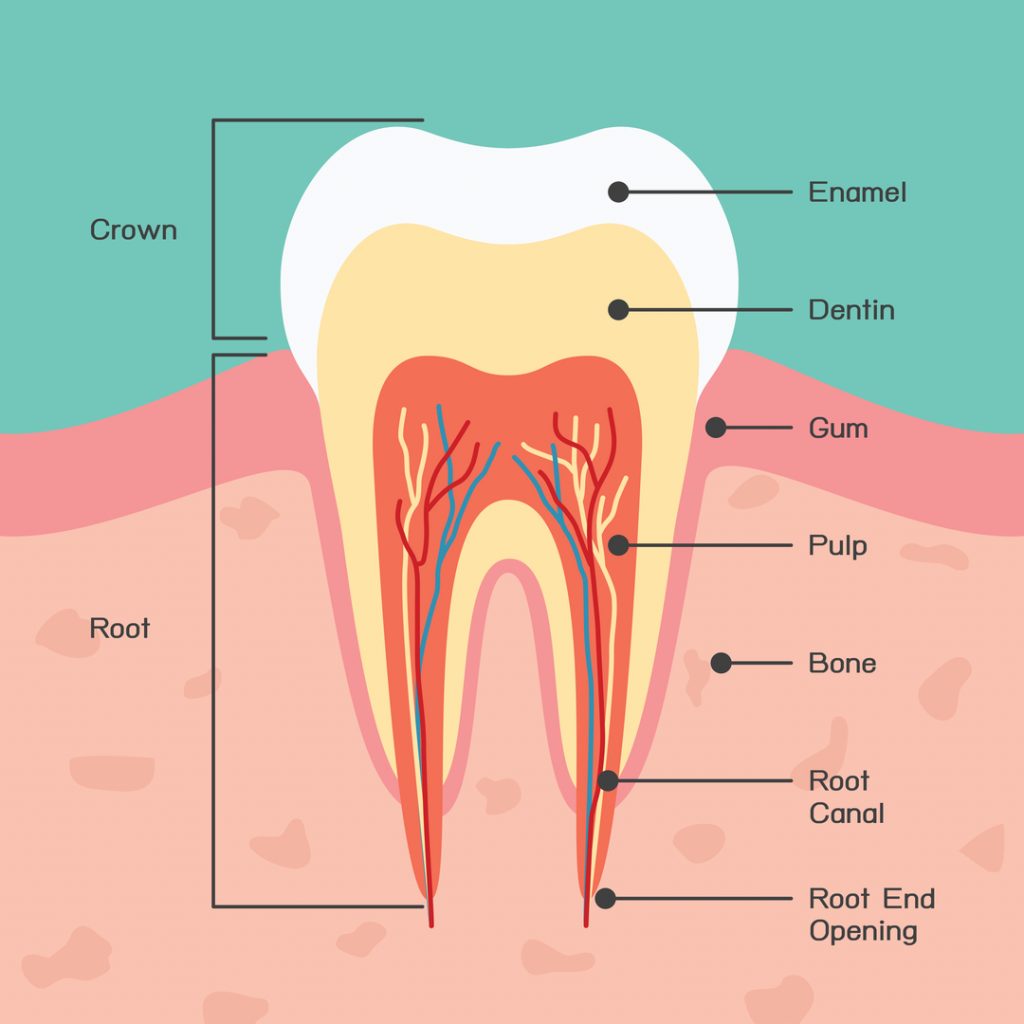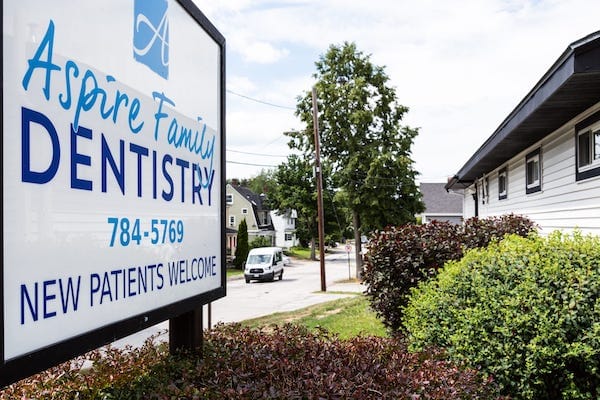One of the most dreaded words you can hear from a dentist is “cavity”. No matter your age, that is probably one word you do not want to hear at the end of your checkup. But what causes them, how can you prevent them, and what happens if you don’t get that filling? In this article, we are going to cover the science of dental decay, symptoms of cavities, how to prevent them, and what happens when you skip the dentist or don’t get that filling. If you would like to make a dental appointment in Lewiston please give us a call.
What Causes Cavities & Tooth Decay?
There is a combination of factors that can lead to cavities and tooth decay. Cavities are a form of permanent damage to a tooth caused by bacteria. Cavities generally start on the outside of the enamel and go all the way down to the dentin. Cavities may be on top of the crown, between two teeth, or even underneath the gum line. Tooth decay is one of the most common health problems. When bacteria in your mouth combine with the sugars from the food we eat, this can lead to damage to the enamel. Additionally, acidic foods and beverages can quickly cause damage to the enamel which leaves teeth more vulnerable to decay at the dentin level. That being said, some teeth are more vulnerable to cavities purely because of their shape. Some children’s teeth may have unique geometry that makes them a higher risk for tooth decay.

What Are The Symptoms Of A Cavity
First off, the best way to prevent a cavity is to go to the dentist before you have symptoms. Our tooth enamel doesn’t have nerves in it, so you are unlikely to feel anything until the decay has already spread. It is always better to prevent cavities instead of waiting for them to appear. That begin said here are the common signs of tooth decay:
- Sudden Pain or Toothaches: If you feel spontaneous pain in your teeth that doesn’t have any obvious cause this could be a sign of tooth decay.
- Sensitivity: Extreme sensitivity to hot/cold foods as well as putting pressure on your teeth can be a sign of tooth decay.
- Pain: If you experience pain when eating or drinking something hot or cold or something sweet this could be a sign of a cavity.
- Holes In Teeth: If you can see holes or pits in your teeth this is a sign you have cavities (unfortunately many cavities form in the gaps between teeth or even under the gums which are hard to see).
How Do I Prevent A Cavity?
No matter your age you probably want to avoid cavities. Here are a few tips on how to prevent cavities from forming in the first place.
- See Your Dentist Twice A Year: Two dental visits each year can prevent cavities from forming in a few ways. First, your routine dental visit will include a professional cleaning which can help remove plaque and tartar that you can’t remove with brushing and flossing alone. Secondly your dentist will preform and exam to find any signs of cavities. Dental x-rays can show decay below the gums and in between the teeth which can help catch decay early. In some cases, tooth decay is reversible when caught early. Seeing your dentist often can help you prevent decay from turning into cavities.
- Brush Your Teeth Twice Daily: It is recommended that you brush your teeth twice every day. Toothpaste contains elements designed to remove plaque, food particles, etc. from the surface of your teeth. Make sure to brush your teeth for the recommended two full minutes to ensure that you are getting a good clean every time you brush.
- Floss Your Teeth Daily: As mentioned above cavities often form between your teeth. Flossing daily can help remove food and bacteria between the teeth and prevent these cavities from forming.
- Avoid Sugary & Acidic Food/Beverages: Sugary and acidic foods can increase tooth decay. If you plan to eat or drink something sugary or acidic you should brush/floss immediately after. The less time that sugar and acid is in your mouth the better. It’s also important to understand what beverages are considered acidic. While soda often is the most noted beverage to avoid, most fruit juices, including natural juices are both sugary and acidic. Fruits like oranges have citric acid and a lot of natural sugar. So while natural juice may be more healthy than soda, it can still be dangerous for your teeth.
What Happens If I Don't Get A Filling
Dental decay is not a stagnant process. The longer the decay goes unchecked the more damage it will do. If caught very early you may be able to reverse the start of the damage by paying more attention to brushing and flossing. Eventually tooth decay will cause a cavity large enough that a filling is required. Left unchecked the damage could become severe enough that a dental crown is needed instead of a filling to fully replace the chewing surface on the tooth. Alternatively, if the decay is below the gums, a root canal may be needed. And of course, if decay is allowed to exist for a longer period of time the entire tooth could fall out, decay also spreads to neighboring teeth so this can cause a lot of problems over the years.
Schedule With Our Family Dentists in Lewiston Maine
Aspire Family Dentistry provides dental services for the whole family. So whether you need professional teeth whitening before an event, a regular checkup, or are having a tooth issue we would be happy to see you at our office. Give us a call or use our new patient form to set up an appointment today.

